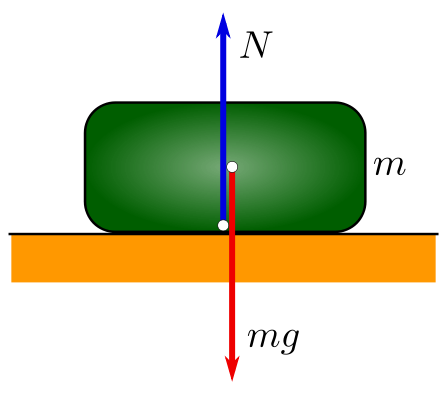Shall we simply call it "retardation" then? There must be a name for when a thing accelerates less than it would in freefall, even if not at all, when it is in mechanical equilibrium.
Yes, it's when there's some upwards force.
I am glad we could finally, not
despite, but
through what might at first seem like a needlessly pedantic and nonsensical debate, to a mutual understanding of each other's... "epistemologies", however... "crippled". If you insist that what is an "acceleration" be named "retardation" just because it is the rate of change in velocity - or the force per mass - in a different direction, I will gladly comply, if it allows us to get back on topic.
We know that the "retardation" of the structure must equal the gravitational acceleration so it
stands up. If additional forces act on the structure - a Tae Bo class, a subtropical hurricane, a library full of heavy books - the structure must still be able to "retard" the accelerations resulting from those forces so the structure remains in mechanical equilibrium.
Expressed in terms of forces, the forces keeping the structure up must equal the gravitation resulting from its mass. If additional forces act on the structure, it must still be able to exert forces in the opposite direction - "push back" - so the structure remains in mechanical equilibrium.
Expressed in terms of energy, the elastic potential energy must do the virtual work of keeping the displacements due to additional inputs of mechanical energy within a given margin so that the structure does not convert its gravitational potential energy into kinetic energy.
We also know, by observation, that when the structure falls, the "retardation" is smaller than half the gravitational acceleration on average. In terms of forces, the forces acting on the structure during the fall - the friction force - are smaller than half the weight of the structure on average. In terms of energy, all that keeps the gravitational potential energy from being
completely converted into kinetic energy is the energy of friction.
This leads us to a fool-proof way of describing the system objectively, mathematically and physically.
We have the Bazantian computational model, we have Oysteins computational model, and we have the domino tower and the Twin Towers. I am convinced that we can mold these approaches into a grand unified theory of tower self-disassembly, simply by taking Oysteins computational model and, instead of letting the masses hover mid-air, rest them on "springs" with known load-displacement curves (à la Bazant) so the structure stands up. Instead of a Dirac function, we only have to "smear" the function a little so its area equals the energy of friction, with still high enough a peak so that small displacements can be balanced to remain in mechanical equilibrium.
If we now allow the "mass shedding" parameter to follow an arbitrary function, this computational model will be able to describe both the domino tower and the Twin Towers, even the "NMSR does the Heiwa Challenge" "weights on toothpicks on a broom stick" model and psikeyhackrs "Momentum Interference Test" model, and
additionally describe the possibility of arrest as is the case in the crushing experiments "Collapse onto cumulative supports" and Coles' models with the concrete slabs and paper loops and pizza box columns - and the real-world "experiments" (botched demolitions), and even vérinages - simply by adjusting the load-displacement curve relative to
mg.
Any objections?

